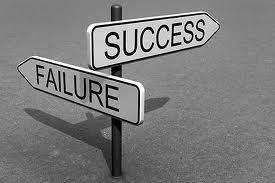This past week I attended the Quant Invest conference, a show targeting quantitative trading, risk management and regulation. I moderated a technology-focused panel with a distinguished cast from numerous quant trading firms. In our conversation we explored the challenging choices those founders and managing partners faced on their road to success.
When it comes to a firm’s technology decisions there is always the overarching question… What do we buy vs. what do we build? How do we determine the cost benefit model of that decision? In lightning fast markets with razor thin margins how do you prioritize a business strategy? Is it time to market, tooling for fast strategy development, a need for low-latency, global market connectivity, highly available and disaster recovery? Looking at the entirety of the trade lifecycle from the tools to research new trading ideas all the way to post trade clearing there are so many moving parts that firms have to be extremely careful to keep their eye on the ball. You’re in the money business, not the software business. But this is not so easily recognized.
Reports from the Hedge Fund industry show an odd mix of statistics. On one hand the industry is booming, in the first quarter of 2011 and even back into 2010 there has been a sharp increase in the number of new fund start-up’s. Over 300 new funds opened their doors. With so many layoffs from the big investment banks figuring out what many of those money managers decided to do next is not too difficult. Yet those same Hedge Fund stats reveal another trend, that in January thru March almost 200 funds closed down business. As quick as a new fund opens another one dies on the vine. They are likely failing to achieve returns above the broader market, but is there also a hidden corollary?
The dynamics and scope of running a successful fund extend far beyond the prop trading desk at any bank. There is a dual challenge to grapple with, managing the investment capital and the deployment of a wide range of automation technology to enable that success. Within a fund or prop shop there is no army of IT staff managing the pipes and trading infrastructure as found at those banks many left behind.
The increasing prevalence of automation and rapid-fire trading technologies has increased competition. Sophisticated algorithmic strategies have become the hunter and all else the hunted. Unfortunately the statistics bear-out that many firms are ill equipped to rise to the challenge.
Automation and the technology behind it play a critical role in the trade lifecycle. Its evolution goes hand-in-hand with innovations in trading. Knowing the right blend of build vs. buy is as big a key to success as the profitability of the deployed strategies. Misguided development choices can often lead to costly overrun projects, leading you astray from the things that matter most, what drives alpha.
For those firms on my panel the dilemma of build vs. buy was put to the test. Most sought to achieve a fast time to market, leverage what they knew – that internal intellectual property (IP) and farm-out the rest goal. Strategy design and development in traditional languages such as C++ was the convention with vendors and brokers supplied the remaining functions; a) Tools for alpha discovery and quantitative research. b) EMS/OMS functionality c) Connectivity for market data/trade execution d) Services for post trade clearing and TCA. One brave and daring quant fund however chose to build their entire trade platform in-house including their own custom TCP/IP stack.
Nonetheless, having a sound technology strategy is of critical importance. Knowing your priorities and defining a technology decision matrix will depend on what you aim to achieve, your trading style and internal core competencies. In any case being smart about your technology decisions is a means to be smarter about your trading. Investing your intellectual property of human capital towards the primary goal of finding alpha can mean the difference between success and being a part of those failure statistics.
Once again thanks for reading.
Louis Lovas
For an occasional opinion or commentary on technology in Capital Markets you can follow me on twitter, here.


Another great blog post giving a quality brief on a broad, noisy topic. Love the quote at the beginning of the article.